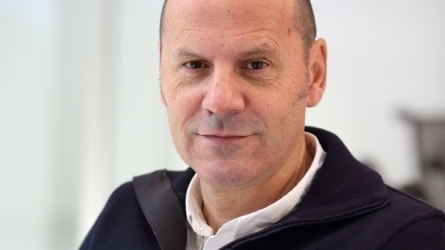Julio Díaz: 'Being poor is the biggest killer in heat waves'
The heat waves recorded in recent years have raised the issue of the pressing need to adapt to the new environmental conditions imposed by climate change. High temperatures particularly impact people who are vulnerable due to their age, those with pre-existing conditions or, in the case of heatstroke, people who work outside at the hottest time of the day. Heat waves thus lead to excess deaths and an increase in hospital admissions.

Under the title 'Climate Change and Health. Heat Waves: Adapting is Not Capitulating", the Donostia Sustainability Forum hosted the talk given by two of the leading specialists studying how heat impacts public health: Cristina Linares Gil, PhD in Preventive Medicine and Public Health, and Scientific Co-Director of the Observatory on Climate Change, Health and Urban Environment at the Carlos III Institute; and Julio Díaz Jiménez, PhD in Physical Sciences. Scientific Co-Director of the Climate Change, Health and Urban Environment Observatory at the Carlos III Health Institute. Both are leading figures in epidemiological research on the effects of climate change on human health; they are particularly interested in explaining how to spearhead adaptation.
In extreme heat conditions, heatstroke, as Cristina Linares explained, only accounts for between two and three per cent of the attributable mortality. The majority of hospital admissions and deaths are due to the worsening of existing circulatory, pulmonary, renal and psychiatric disorders.
Heat alert maps
Cristina Linares explained that a heat risk prevention plan has been implemented every summer since 2004. A new feature starting in June 2024 is that the alert system no longer uses the division by provinces but is based on 182 iso-climate zones. The temperature threshold has been set for each of those zones from which mortality and hospital admissions increase. This temperature threshold is different, for example, in the coastal and inland zones of the same province; it is closely related to urban planning, housing adaptation, and the services and the infrastructures to be found there.
Julio Díaz, in fact, insisted that "there are no universal solutions; what works for Madrid does not work for Bilbao, or for Barcelona. For example, there are places where the mortality is influenced by the maximum temperature, and others, such as Valencia, where the minimum temperature has a greater impact". He therefore explained the importance of avoiding the heat island effect and of rewilding the cities.
Impact of heat on poverty and vulnerability
Both speakers stressed that narrowing the economic and social gaps is essential to reduce vulnerability. Julio Díaz pointed out that a study on the impact of heat in Madrid showed it was greater in the poorer districts. "People did not die from heat in the wealthier districts, but they did in the poorer ones. After analysing different factors, such as the population pyramid and the green areas, we see that money was the key one. It is not about having air conditioning; it is about whether or not you can afford to run it. Being poor is the biggest killer in heat waves".
As Cristina Linares explained, “if you live in a better-off neighbourhood, your house is built better, most probably is well insulated, has green areas nearby, and good accessibility. In the poorest districts of Madrid, the houses are smaller, people are crammed in and have less access to quality food and adequate healthcare. Overall, this is decisive when it comes to having a health condition. Public policies must be more focused on reducing these inequalities".
The importance of adaptation
Both experts stressed the importance of improving the models to assess the impact of heat on each zone, along with related variables, such as air quality. Yet what is needed when it comes to adaptation is clear, stressed Julio Díaz, "retrofitted buildings, blue and green areas, and prevention plans being put into practice". In fact, added Cristina Linares, the risk of dying in a heat wave has fallen from 14% in 2004 to 2%. "We are getting things right; the heat culture is deeply rooted in southern Europe, and we therefore say we must not capitulate".
In 2023, the average temperature recorded on the Earth's surface was the highest ever. Climate change is not a matter of ideology, but is a political issue, it is down to science", added Cristina Linares. "The climate crisis is a problem, furthermore, which is speeding up, because we are not dealing with the cause, the unchecked burning of fossil fuels. And the changes in the climate that we have already generated will even carry on for centuries". Both experts therefore explained that adapting is essential.
The heat waves recorded in recent years, for example, have raised the issue of the pressing need to adapt to the new environmental conditions, imposed by climate change. High temperatures particularly impact people who are vulnerable due to their age, who have pre-existing conditions, or who work outdoors. And that vulnerability is increased by social and economic inequalities. The quality of a neighbourhood's housing, services and infrastructures, the proximity to green areas, influence the impact of heat on health.
Since 2004, the Spanish National Plan of Activities to Prevent the Effects of Extreme Temperatures on Health has been activated in summer. The new feature this year is that the province is no longer the territorial benchmark. On 17 June, a new alert system, based on 182 iso-climate zones, came into force; it allows a more precise view when issuing an alert.



